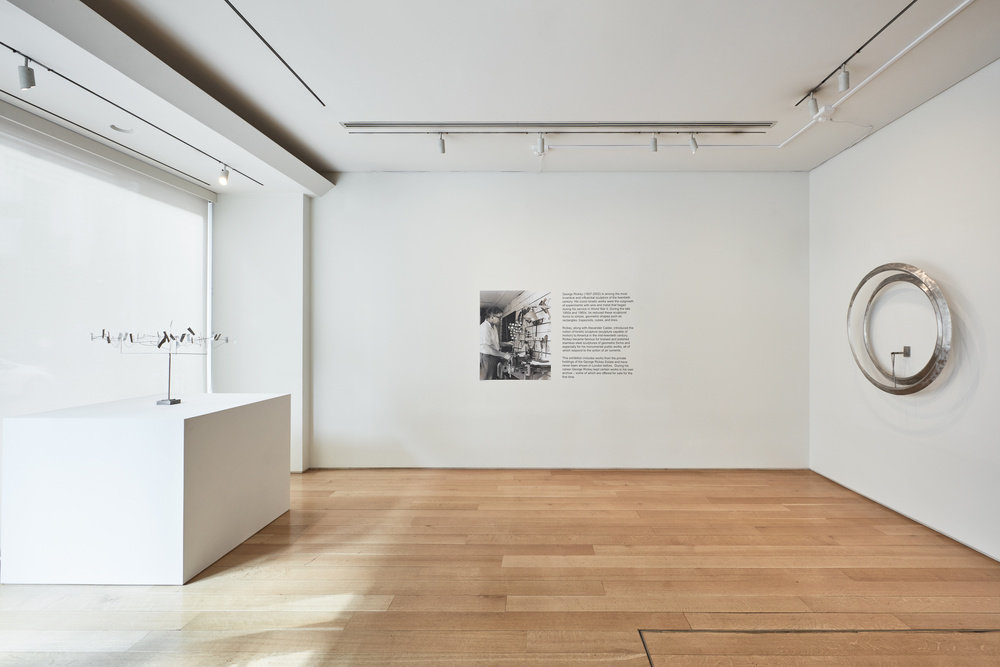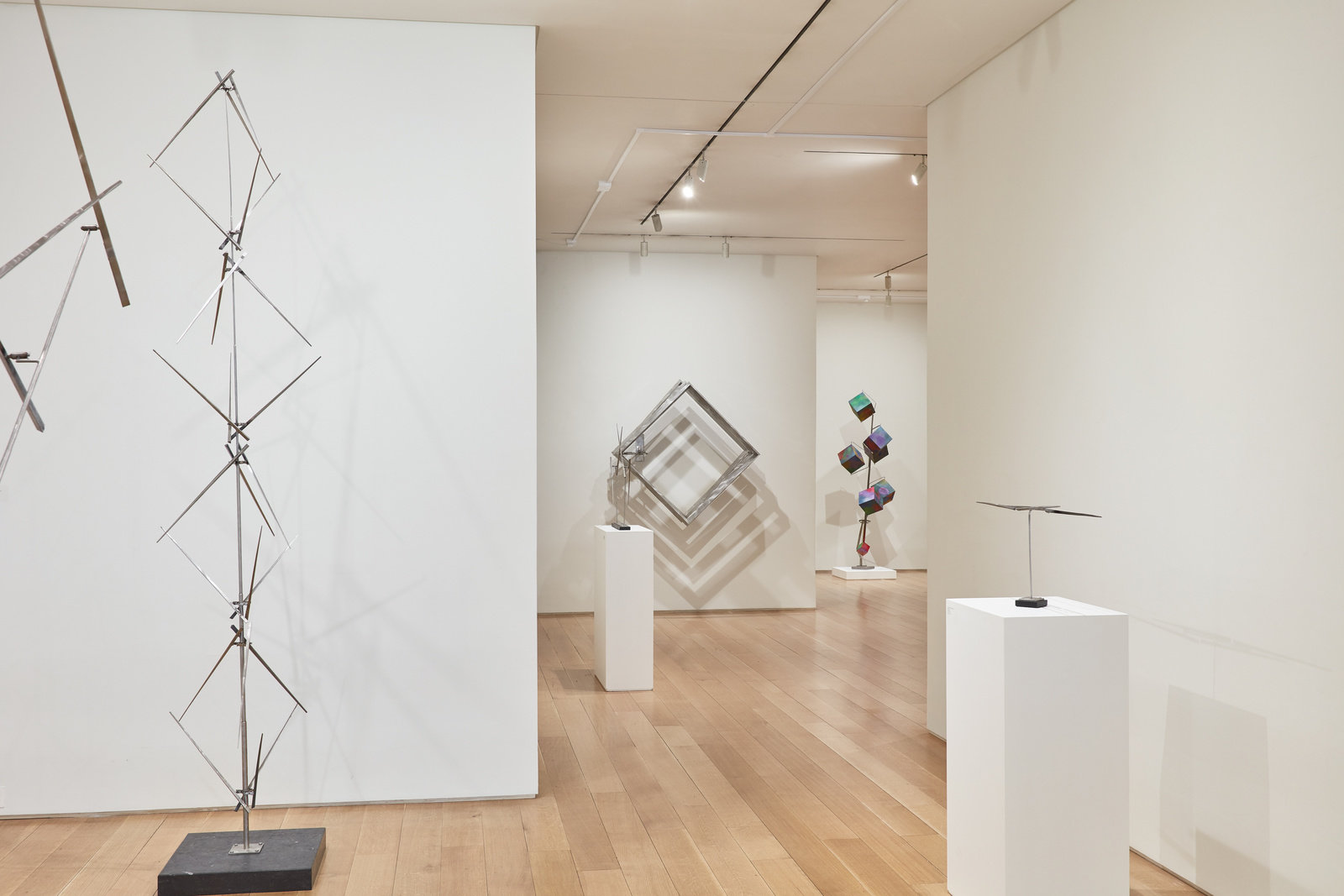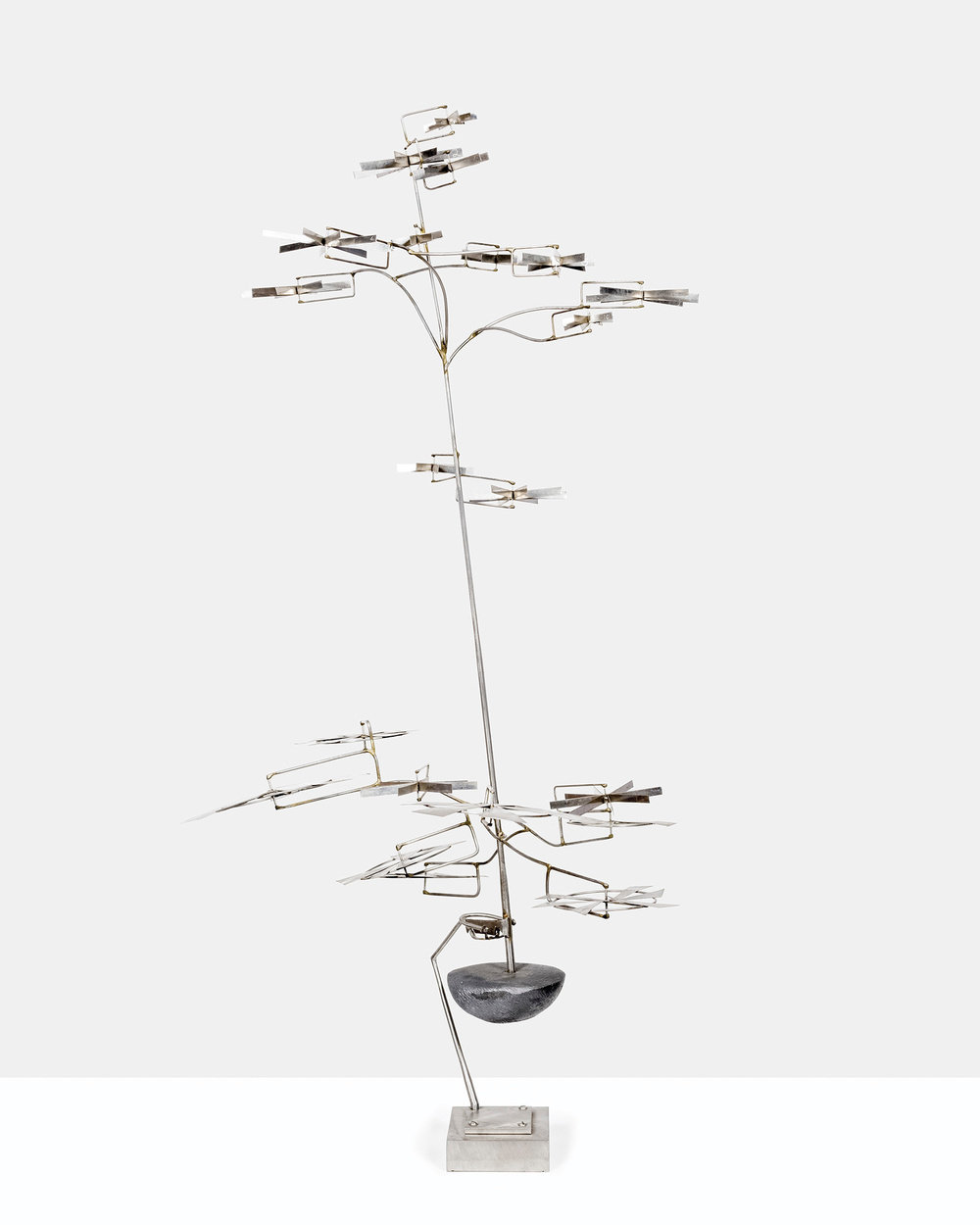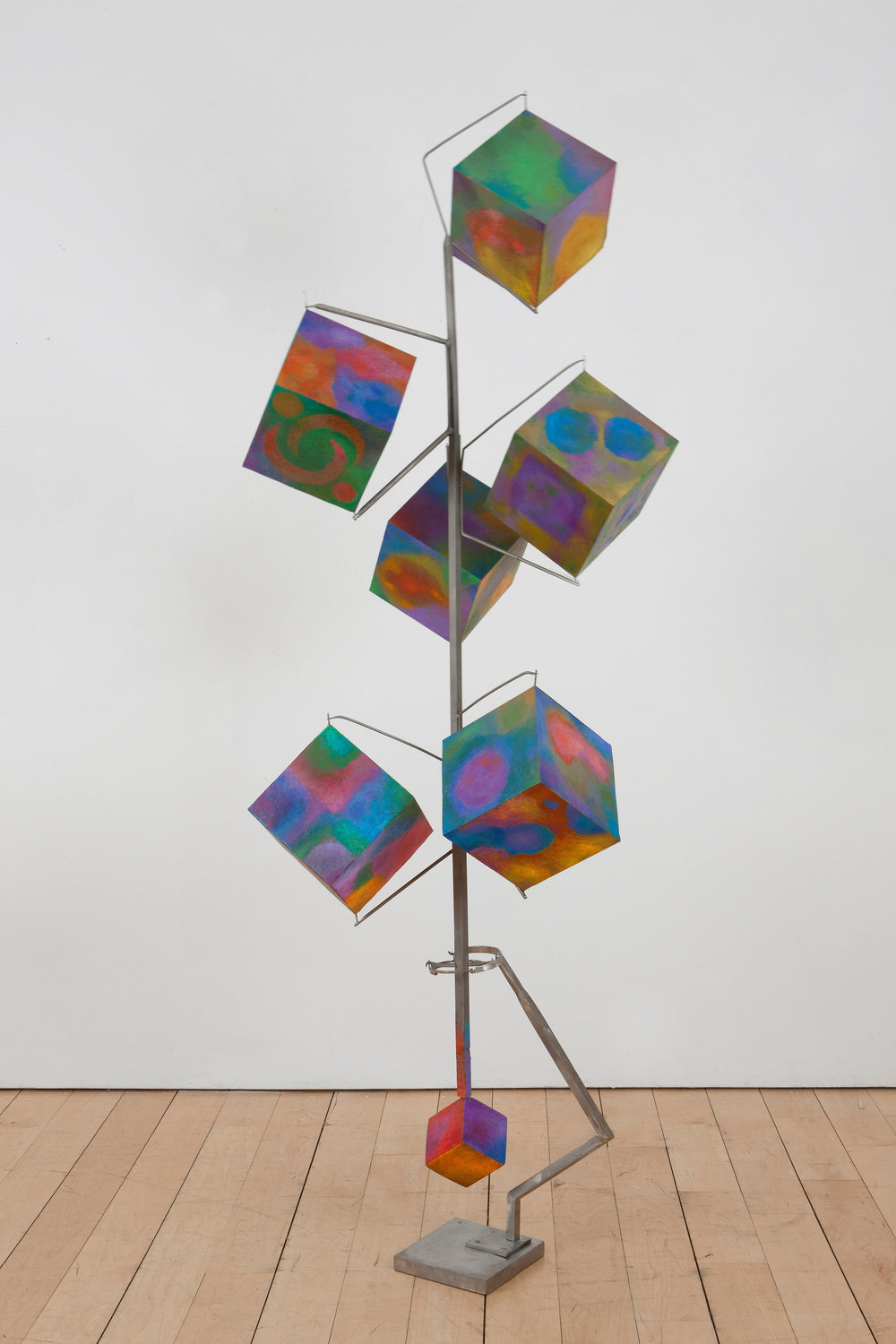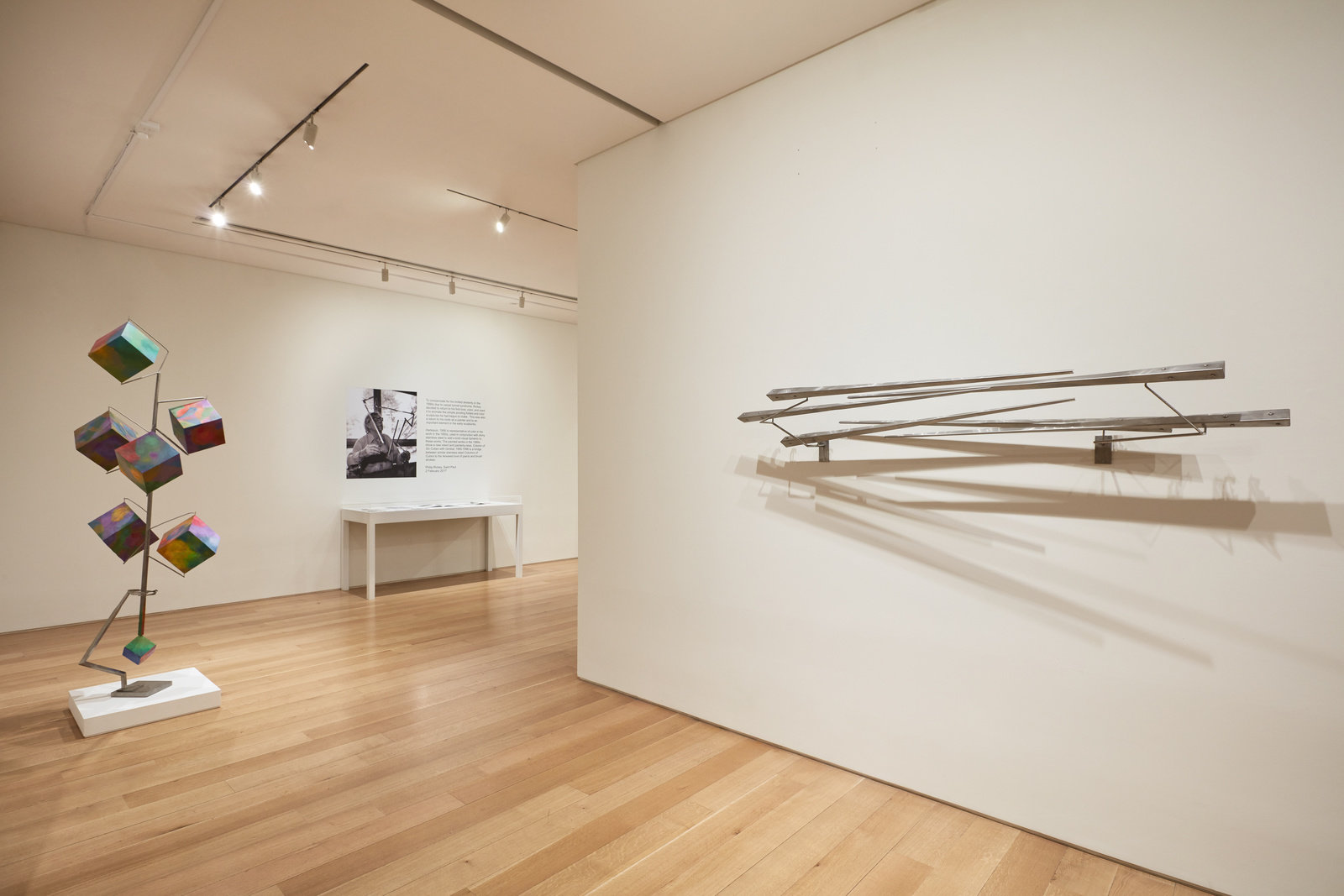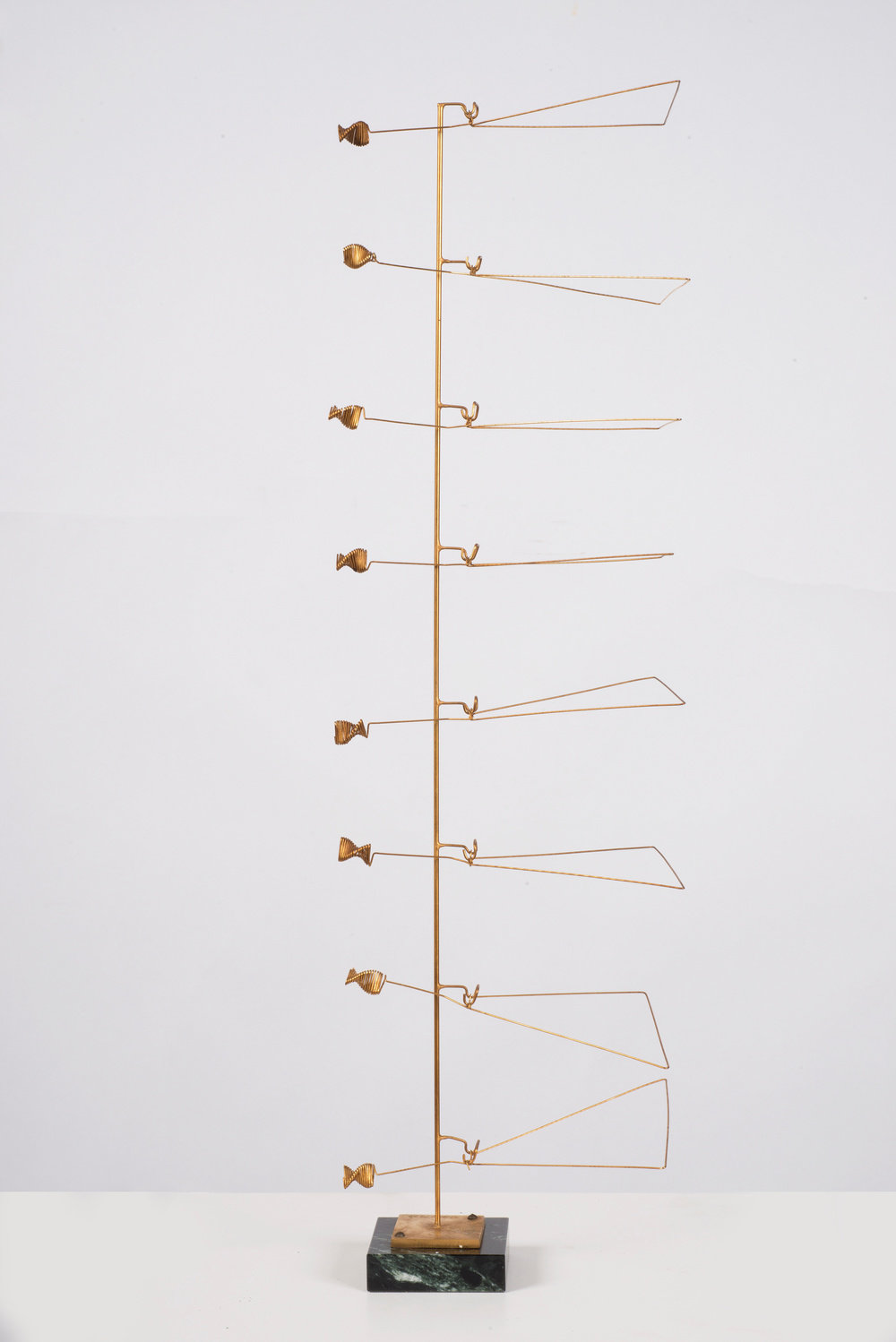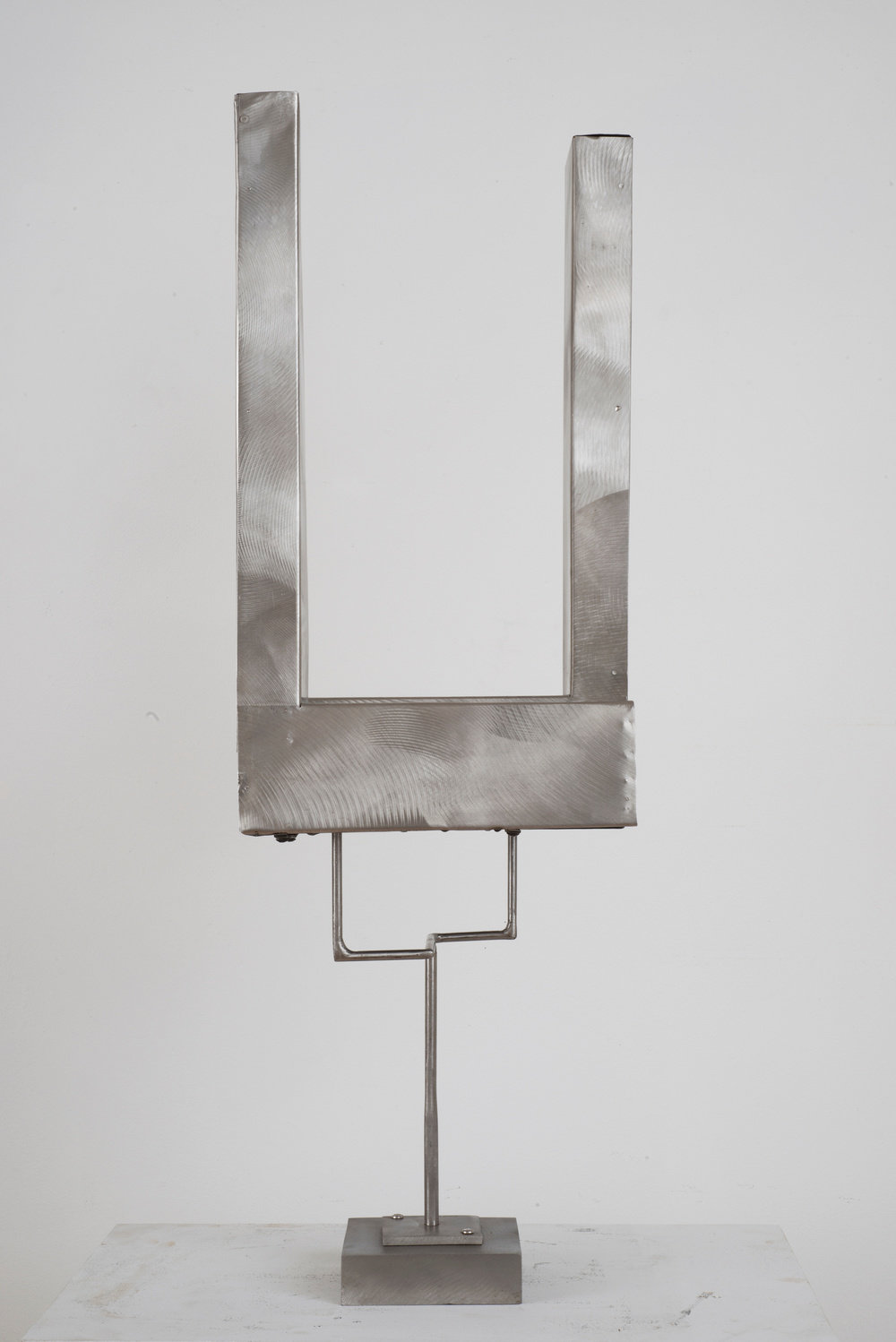Marlborough is delighted to announce an exhibition of sculpture by renowned American sculptor George Rickey (1907-2002). On view for the first time in London, and for the first time since 1982 in the U.K.,16 kinetic sculptures from the private holdings of the George Rickey Estate.
An iconic and influential sculptor represented in major museum collections internationally, Rickey's kinetic works developed as a result of experimenting with a range of materials during his service in WWII as an engineer in the Army Air Corps. The job required both mechanical skill and an understanding of changing air currents and their effects on ballistics, which inspired his move to sculpture from painting.
Rickey, along with Alexander Calder, was pioneer in introducing kinetic sculpture to America in the mid-twentieth century. He is also well-known for his stainless steel sculptures that respond to the natural elements. Many works have been large-scale commissions for sites in the US, Japan and Europe, including Four Open Squares Horizantal Tapered, in the UK, an important purchase and donation by the Sainsbury family to the Trinity House Hospice in Clapham, London. Rickey was also a good friend of Charles Jencks and gave a work to Maggie's Centre in Edinburgh, which Jencks founded in 1995.
This comprehensive exhibition includes works from the artist's personal archive, some which have never been shown before, offering a new insight into his artistic process and prove Rickey as an intelligent and profound interrogator of kinesis in art. His son Phillip states: "Many of the works are unique and are first examples of discoveries that led to new works. My father kept these sculptures close at home for inspiration, never offering them for sale."
In the early 1990s, Rickey developed carpel-tunnel syndrome in his left hand. As a result, he returned to his roots as a painter and animated simple sculptural forms. Vibrant colours decorate the geometric shapes in Column of Six Cubes with Gimbal, 1995-1996. As Phillip comments, "the kinetic elements are now a canvas on which enthusiasm played out."
A fully illustrated catalogue includes Rickey's essay The Métier, first published in The Art Digest's 1965 edition of Contemporary Sculpture: Arts Yearbook. It is as fresh and informative today as it was 52 years ago and addresses first-hand many of the vital art issues of Rickey's time, most of which have carried forward to the present.
Marlborough will be presenting a joint booth of constructivist works by George Rickey and Victor Pasmore at Art Basel Hong Kong, from 23-25 March 2017.
Born in 1907 in Indiana, USA, Rickey was raised near Glasgow, Scotland and later studied History at the University of Oxford, developing an interest in art whilst taking classes at the University of Oxford, developing an interest in art whilst taking classes at the Ruskin School of Drawing and Fine Art. He later studied at the Académie André Lhote and the Académie Moderne in Paris. Rickey received honorary doctorate degrees from nine institutions. In 1974 he was elected to National Institute of Arts and Letters in the USA, and in 1995 received the Gold Medal for Sculpture from the American Academy or Arts and Letters. Rickey's works can be found in major museums and collections worldwide, including The J. Paul . Getty Museum, Los Angeles; Solomon R. Guggenheim Museum, New York; Hara Museum of Contemporary Art, Tokyo; The Los Angeles County Museum of Art; The Metropolitan Museum of Art, New York; The Museum of Modern Art, New York; The National Gallery, Edinburgh; The National Gallery of Art, Washington DC; Ruckversicherungs-Gesellschaft, Munich and in the UK; Tate Gallery, London; Hill House, Helensburgh (National Trust for Scotland); Holywell Manor Garden, Balliol College, Oxford, UK; Glasgow University; Glenalmond College, Perthshire, UK and Maggie's Centre, Edinburgh.
Marlborough would like to thank Dale Lanzone for his invaluable help with the curation of the exhibition, as well as George Rickey's son Phillip, who represents the artist's estate, for adapting the essay he wrote to accompany the auction of part of his parent's art collection at Hauswedell and Nolte, Hamburg, Germany, in 2004.
Works

